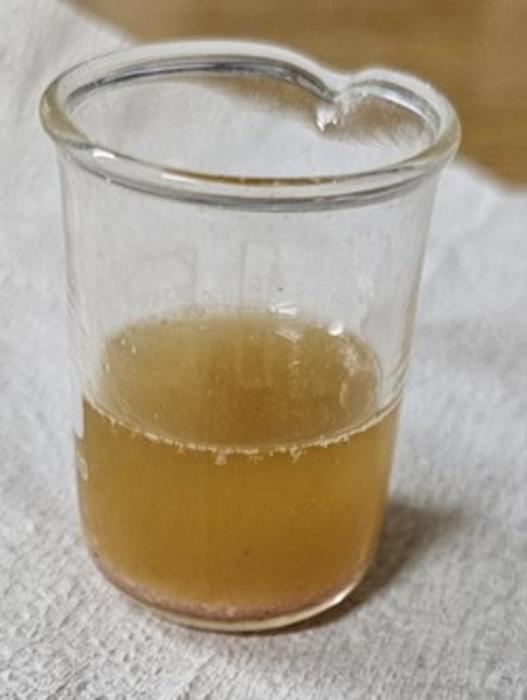Unhealthy beverage consumption highest among economically-vulnerable households that rely on multiple food assistance programs
Philadelphia, July 10, 2023 – A long-standing and contentiously debated question is the extent to which US federal food assistance programs contribute to or deter healthy beverage intake. Findings of a new study in the Journal of Nutrition Education and Behavior, published by Elsevier, show that while beverage intake patterns rarely differed between mothers and […]

Philadelphia, July 10, 2023 – A long-standing and contentiously debated question is the extent to which US federal food assistance programs contribute to or deter healthy beverage intake. Findings of a new study in the Journal of Nutrition Education and Behavior, published by Elsevier, show that while beverage intake patterns rarely differed between mothers and young children who participated only in the Supplementation Nutrition Program for Women, Infants, and Children (WIC), only the Supplemental Nutrition Assistance Program (SNAP), or neither program, those whose households participated in both programs consumed high amounts of sugar-sweetened beverages (SSBs). Bottled water intake, which is common among communities with high distrust of tap water and can be an economic burden for low-income families, was also common among mothers participating in WIC and SNAP.

Credit: Journal of Nutrition Education and Behavior
Philadelphia, July 10, 2023 – A long-standing and contentiously debated question is the extent to which US federal food assistance programs contribute to or deter healthy beverage intake. Findings of a new study in the Journal of Nutrition Education and Behavior, published by Elsevier, show that while beverage intake patterns rarely differed between mothers and young children who participated only in the Supplementation Nutrition Program for Women, Infants, and Children (WIC), only the Supplemental Nutrition Assistance Program (SNAP), or neither program, those whose households participated in both programs consumed high amounts of sugar-sweetened beverages (SSBs). Bottled water intake, which is common among communities with high distrust of tap water and can be an economic burden for low-income families, was also common among mothers participating in WIC and SNAP.
While both WIC and SNAP aim to improve families’ food security, the programs operate quite differently. WIC benefits allow the purchase of specific foods and beverages and are only available to pregnant and breast-feeding women and children through age 4. Meanwhile, SNAP benefits are available to income-qualifying households and can be used on nearly all food and non-alcoholic beverages sold at authorized retailers.
Lead author Katherine W. Bauer, PhD, associate professor in the Department of Nutritional Sciences at the University of Michigan School of Public Health, says, “Few studies have acknowledged that families with low income commonly participate in multiple food assistance programs. Parents are constantly navigating the different requirements of these programs and working to combine benefits in ways that most benefit their families. It is increasingly important to understand how programs work together to impact the health of adults and children.”
Study data were obtained from an online survey of 493 mothers with young children who had given birth at the University of Michigan hospital in Ann Arbor, Michigan. These mothers were insured by Medicaid at the time of their child’s birth, indicating low household income. Mothers completed questions about their household’s current participation in WIC or SNAP, their past month’s intake of SSBs, their child’s beverage intake, bottled water intake, and several sociodemographic characteristics.
Study results showed mothers who did not participate in either WIC or SNAP drank SSBs 4.5 times/week compared to 8.7 times/week for mothers participating in both WIC and SNAP. Although regular soda intake was low among children aged 1 to 4, children from households participating in both WIC and SNAP consumed soda approximately 5 times more frequently than those from households not participating in either program. Mothers from households participating in both programs also drank bottled water more frequently. These differences were evident even after accounting for sociodemographic differences between low-income families that do or do not participate in WIC and/or SNAP.
Dr. Bauer explains, “Participating in multiple programs increases a household’s food-specific purchasing power. Parents may use their WIC benefits to buy healthy staple foods and save their SNAP benefits for the small luxuries they can now afford, such as SSBs or bottled water. By better understanding the dietary intake of families enrolled in multiple food assistance programs, we can think about strategies that work synergistically across programs to promote food security and improve diet quality, while maintaining personal choice for participants
Journal
Journal of Nutrition Education and Behavior
DOI
10.1016/j.jneb.2023.04.003
Method of Research
Survey
Subject of Research
People
Article Title
Federal Food Program Participation and Beverage Intake Among Families With Low Household Income
Article Publication Date
6-Jul-2023
What's Your Reaction?

































